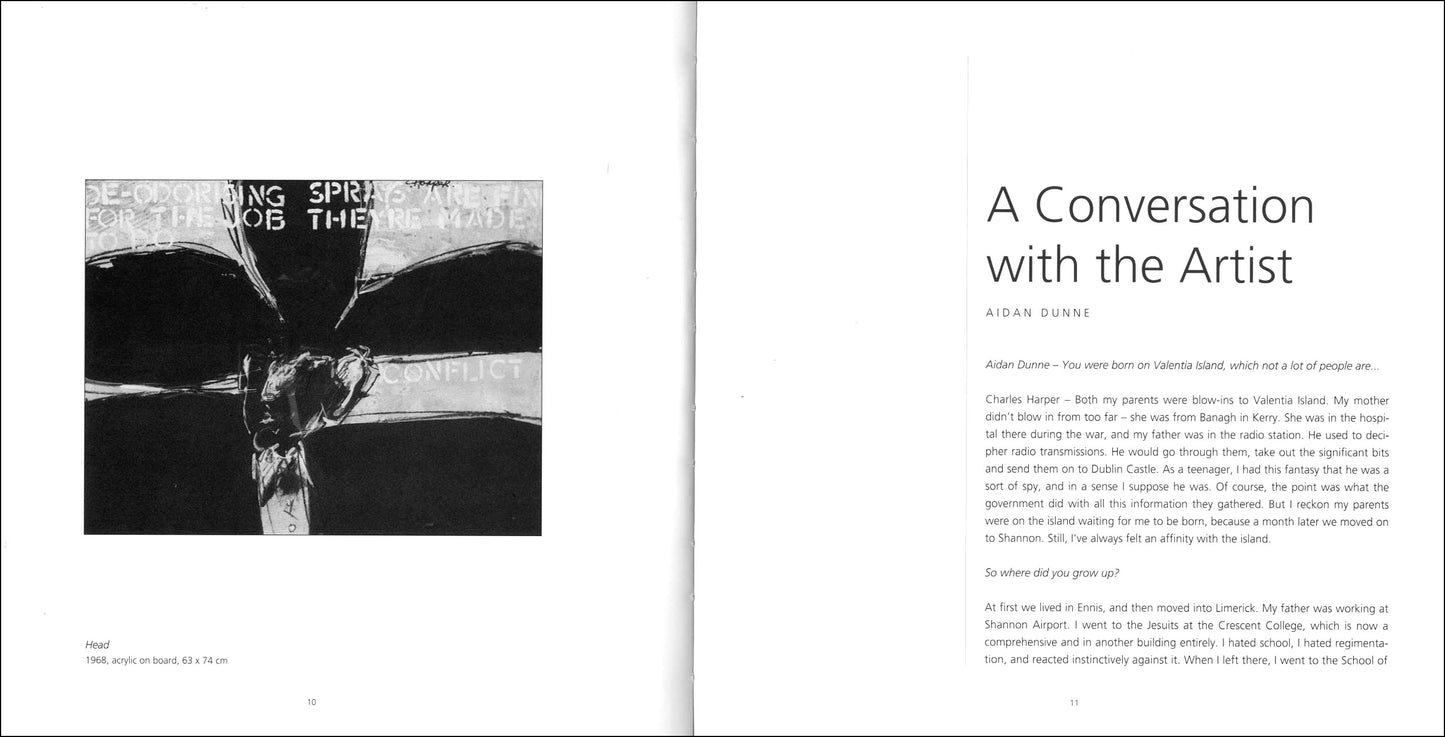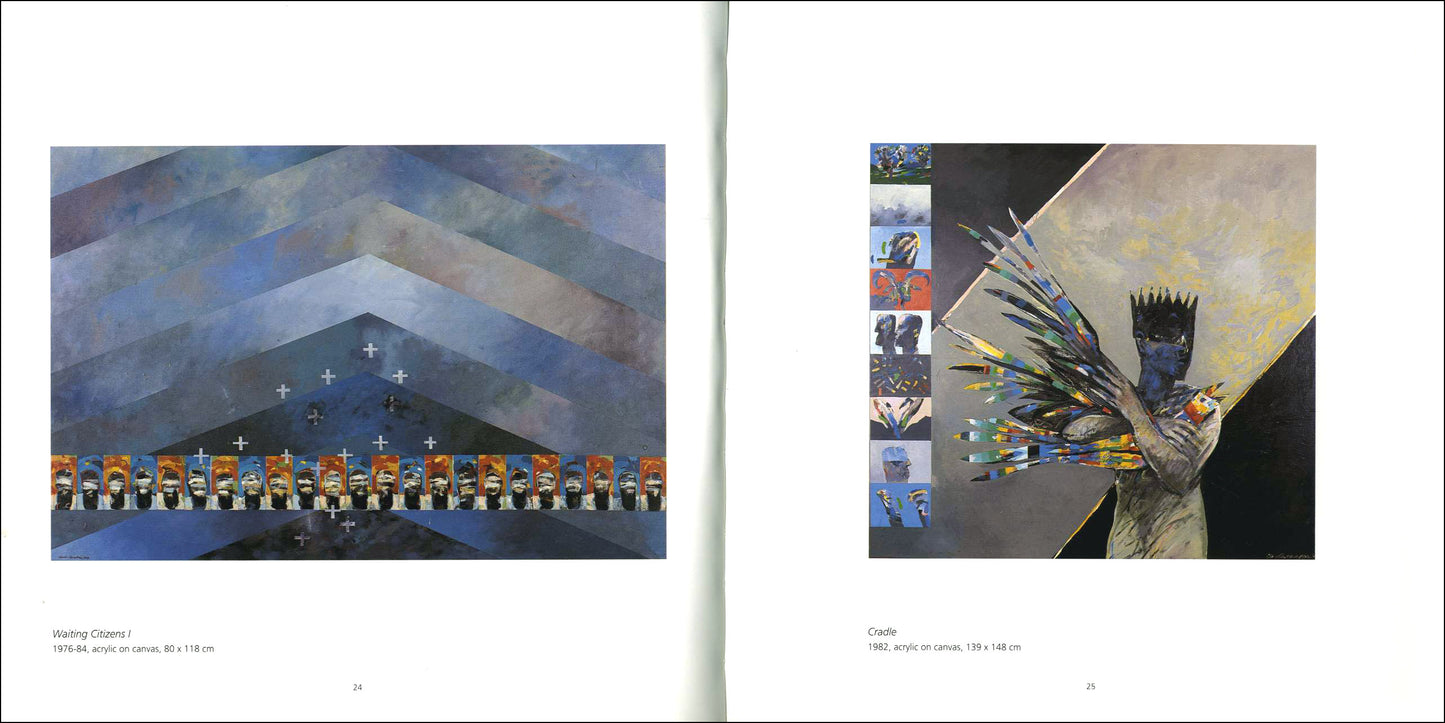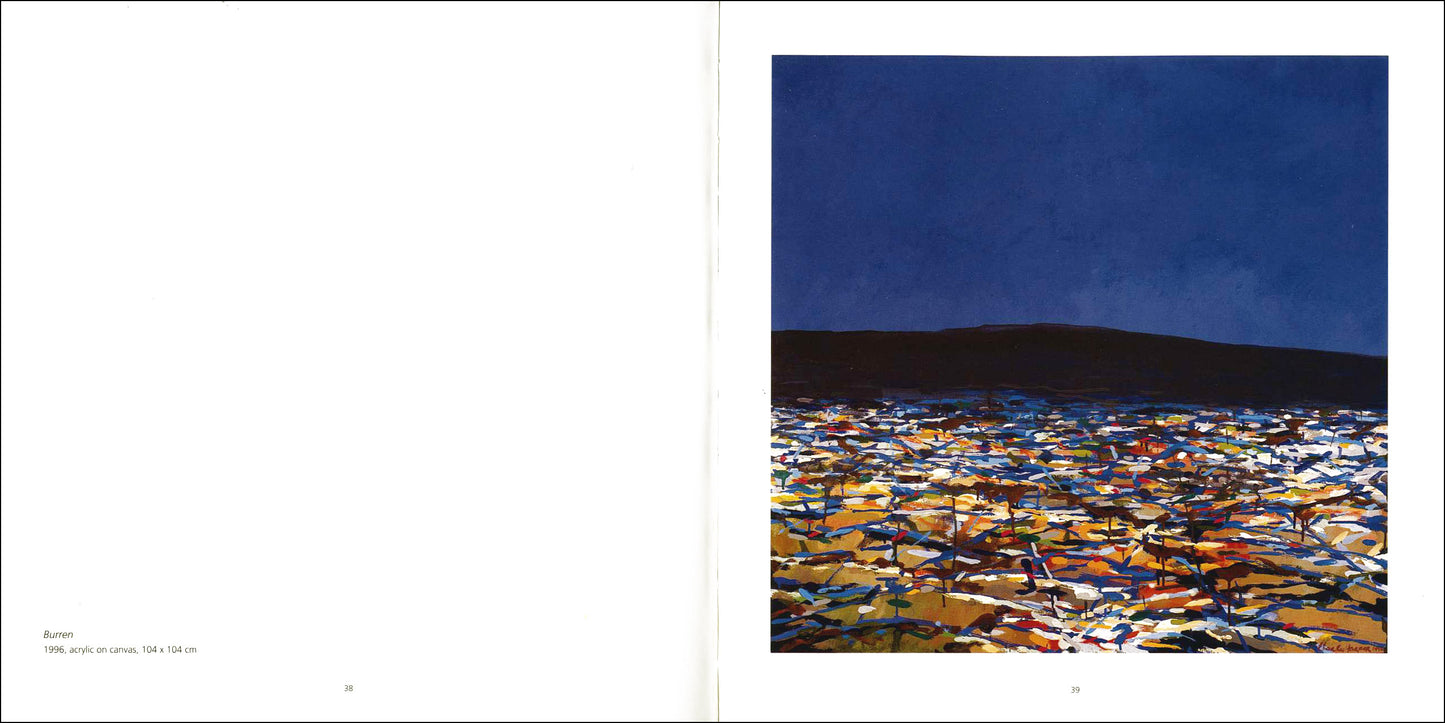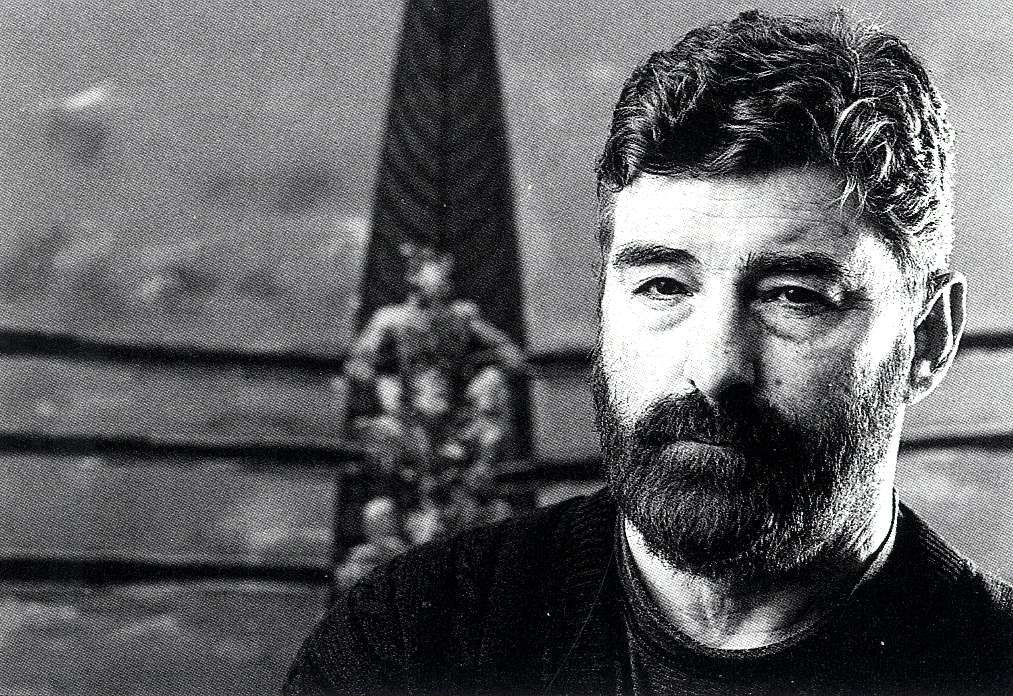Gandon Editions
Profile °7 – CHARLES HARPER
Profile °7 – CHARLES HARPER
Couldn't load pickup availability
Share
essay by Gerry Walker; interview by Aidan Dunne; afterword by Bob Baker
ISBN 978 0946846 115 48 pages (paperback) 22.5x22.5cm 24 illus
Charlie Harper’s early experiences in the animation and advertising industries were the precursor to an artistic career that saw him return to formal art studies and develop his graphic skills. This book explores the constant interplay in Harper’s work between the subject and the content, his concerns with the visual dynamics of the work, his interest in the human condition, the recurring motif of the head and the grid pattern in his work, and his more recent, brief, but nonetheless hugely successful foray into landscape painting.
EXTRACTS
"In terms of subject, Harper’s preoccupations have centred on the human figure, with the occasional brief foray into landscape. This is not to suggest in any sense a reductive approach on his part. In fact the opposite is the case. To exemplify this, a comparison could be made with the Renaissance painter Piero della Francesca, whose subject-matter was extremely varied and ranged from battle scenes to the baptism of Christ. However, one always knew that, in terms of his content, he was invariably exploring his interests in colour and perspective. What made della Francesca remarkable, apart from his innovative approach to the fifteenth-century development of the understanding of perspective and proportion, was the manner in which he facilitated the interplay between his subject and content. The approach that Harper takes is broadly similar. His subject-matter becomes the vehicle in which the content of his work is developed and displayed.
If his subject-matter is concerned with repeat images of the human head and/or the human figure depicted against a grid-like structure in a wholly or partially defined space, what can be deduced about the essential content of his work? The obvious though not necessarily complete response would be to say that Harper belongs to the Humanist tradition, that he is concerned with the perennial problem of the human condition and the seemingly inexorable decline in its fortunes. It is true that, in an overall sense, the work portrays an existential unease at times, but leaves us in little doubt as to where the artist’s sympathies lie. This provides us with an incomplete perspective however, and does not take into account the wider and deeper conceptual base in which his preoccupations are rooted. The response would inevitably be limited, as it tends to answer the wrong type of question. The original question might otherwise be put in the form of ‘What is Harper’s work about?’ This will almost inevitably elicit a generalised speculative response such as that outlined above. A more appropriate question might elicit more about Harper’s conceptual priorities. The direct response to this would incline towards the view that Harper, throughout his artistic career, has been essentially concerned with visual dynamics in general, and visual dialectics in particular."
— from the essay by Gerry Walker
"I am trying to use recognisable images to convey ideas. That’s as abstract as I want to go. My work always has a structure and an organisation. I think it’s important that the structure, and so on, have something for an audience that doesn’t have the art references. And I suppose I am a reactionary as far as that goes, but I make no apology for that. It’s my choice and I’ve got to live with it. So imagery has always been important, either the use of some sort of dynamic image, or making an image dynamic through the way I treat it. There is this sense of a parallel consciousness when you are making your art. You’re dealing with your own concerns, but you must also think in terms of a potential audience. The language of the painting has to make sense, just as spoken or written language makes sense. It must hit the spot, and that’s difficult, and most artists aren’t going to do that successfully. I want to interrelate through my work, and the way I try to do that could be described as existential rather than social – the distinction I was making earlier."
— Charlie Harper in conversation with Aidan Dunne
"He is a true master, a real virtuoso, an artist of flair and sensousness ... he has the emotive power to enchant, shock and excite us."
— from the afterword by Bob Baker
|
CONTENTS Head, Body & Grid – The work of Charles Harper essay by Gerry Walker 4-9 A Conversation with the Artist interview by Aidan Dunne 10-16 COLOUR PLATES 17-40 Afterword by Bob Baker 43 List of illustrations / Artist’s biography |












